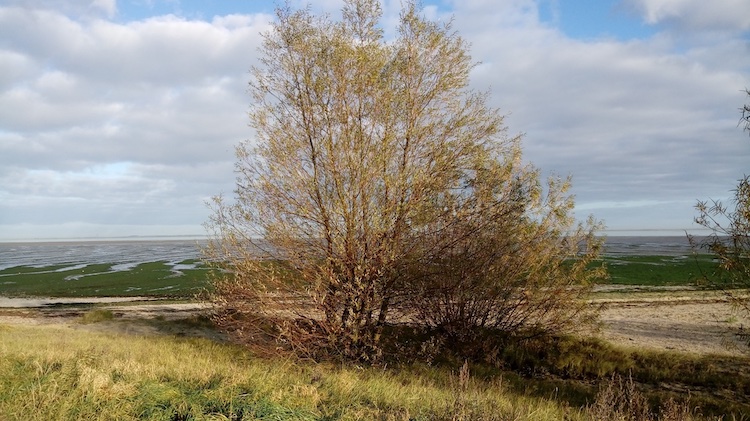H. Markus-Michalczyk1*, J. de Smit2, Z. Zhu3, T.J. Bouma4
1 NIOZ,
2 NIOZ,
3 NIOZ,
4 NIOZ,
Introduction
Recent results indicated that SLR up to 2 m may induce large increases in tidal amplitude and state shifts to complete ebb dominance in tidal bays that may lead to enhanced sediment export according to a model of the European shelf downscaled to the eastern Scheldt (Jiang et al. 2020) with implications for shoreline management. Willow floodplain plantations are proposed as part of plans to create tidal wetlands for ecosystem-based flooding defence with high potential since they grow high in the intertidal. Willow forests characterize riparian floodplains in Europe up to the river mouth, e.g., in tidal wetlands along the Scheldt and Rhine-Meuse estuaries, Ems, Weser and the Elbe but are largely fragmented. However, the willow`s bending capacity and effects of living willows on flow velocity has to be studied.
Methods
First, we studied biophysical traits of two juvenile floodplain willow species in a mesocosm experiment with tidal flooding treatment in a climate chamber. Second, effects of living juvenile willows on flow velocity were studied during both summer and winter in a flume test series at NIOZ.
Results
Permanent and semi-permanent flooding of roots and periodic flooding of shoots reduced shoot length, biomass, and bending capacity but partial submergence did not affect shoot morphology or biophysical traits. Shoot diameter was larger for basket willow resulting in higher bending capacity but white willow showed more consistent results (Markus-Michalczyk et al. 2019). In the flume, flow velocity decreased within the leafy willow canopy but was less reduced above and below the canopy, whereas in winter, flow velocity inside leafless canopy was reduced but less reduced compared to summer. However, flow reduction above the canopy and near bed flow reduction is greater during winter when storm surges meanly occur. Generally, flow velocity was most reduced directly behind the willows and increased with vegetated test section length (Markus-Michalczyk et al. 2020).
Conclusion and Outlook
The willow may be a supplemental feature for shoreline management when applied high in the intertidal and directly in front of the dike. However, more research in the large flume and in the field is needed. Particularly, effects of harsh short time salinity increases (storm surges) on the willow should be studied.

Figure: White willow and Basket willow in front of the dike of Eastern Scheldt. Source: own resource.
I. Surname1*, F.N. Another-Surname2 , Y. Next-Surname2
1 University Name, Country; 2 Organization Name, Country
* Corresponding author: mail.name@organization.org


